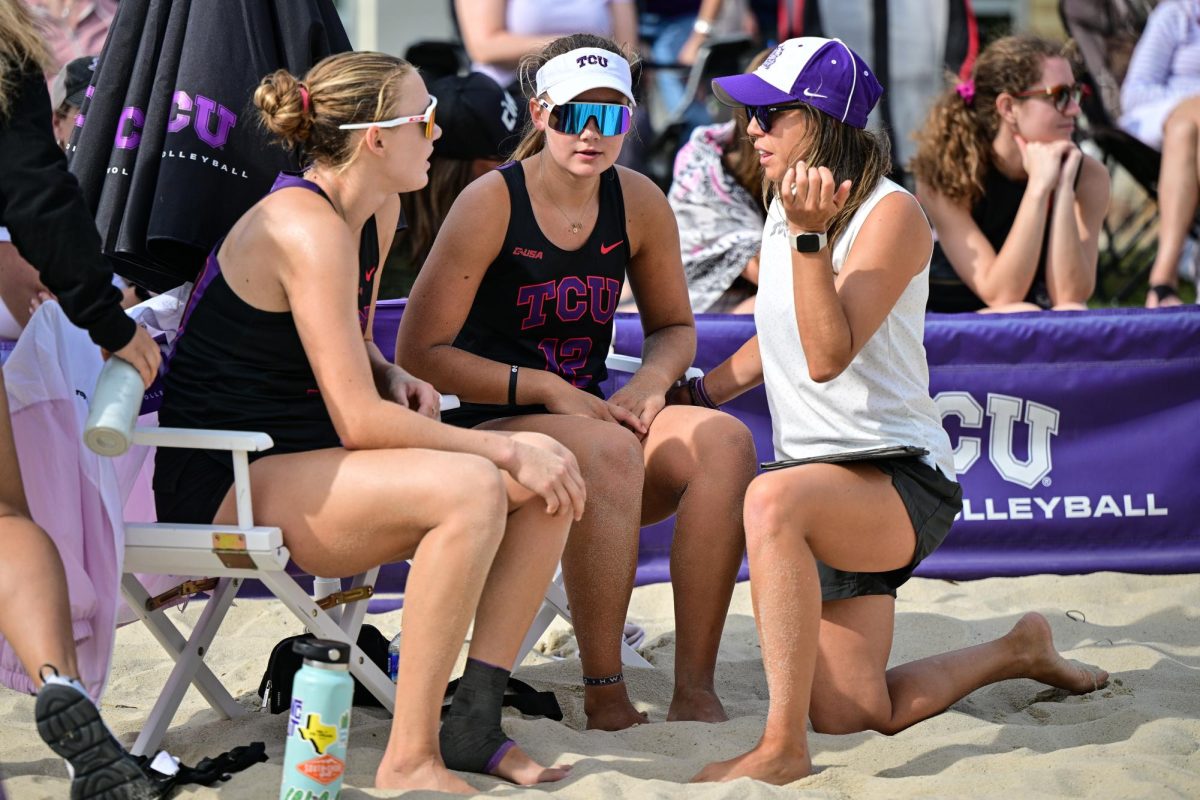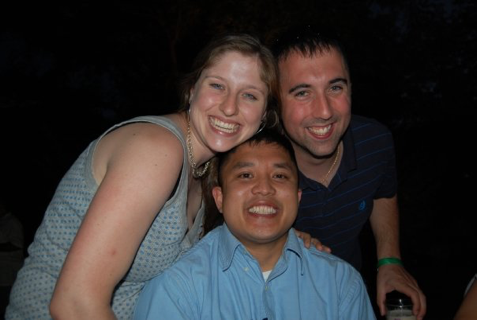When students hear about the equestrian team, they usually respond with something like, “We have an equestrian team here?” or “Equestrian…doesn’t that have something to do with aquatics or synchronized swimming?”
The truth is, many TCU students do not know what equestrian is, much less what equestrian team competitions entail.
Let’s start simple. Equestrian is the sport of riding horses, and yes, TCU does have an NCAA Division I women’s equestrian team.
Equestrian competitions include many types of riding. However, in NCAA equestrian, there are just four events. The two western events are western horsemanship and reining, while the two hunt seat (also known as English) events are equitation on the flat and equitation over fences.
Hold on a minute. What is the difference between western and hunt seat?
Well, the most obvious difference to a spectator of these two styles of riding would be the attire of the rider. When riding western, the rider wears chaps, western or cowboy boots, a western hat, a belt buckle and a show shirt of the rider’s choice. For hunt seat, the rider wears riding pants (usually tan or beige), tall boots, a helmet and a jacket over a button-down shirt.
So what happens in an NCAA equestrian competition?
Each competition, also known as a game or a meet, involves two schools. The day of competition starts with a draw. The draw determines the order of go and which horses (provided by the host school) the riders will ride in competition.
In a typical meet, there will be five horses and five riders from each school in each event. A judge scores each rider on how well she performs each maneuver in the pattern or course. One rider from each school rides one horse, and the rider who scores higher on that horse wins a point for her school. The school with the most points from all four events combined wins the competition.
TCU’s equestrian program started in the 2006-2007 season. The team won the western national championship title at the 2008 Varsity Equestrian National Championships in Waco. In 2009, 2010 and 2011, both the hunt seat and western teams placed at the VENC.
TCU’s next competition will be the Stock Show Bowl against the reigning national championship team, Texas A&M University, and will take place at the Fort Worth Stock Show Feb. 3. Admission is free for TCU students.
Horsemanship
Style: Western
What it is: Horse and rider perform a pattern. Maneuvers include slow and extended gaits, turns on the haunches, sidepasses and square turns. The rider should make each maneuver look smooth and effortless, while maintaining proper body position and showing the horse to the best of its ability.
How it is scored: On a base score of 70, with each maneuver scored from -1 1/2 to +1 1/2
Reining
Style: Western
What it is: Horse and rider perform a pattern. Maneuvers include large, fast circles, run-downs, fast spins and sliding stops. The rider should show speed and style while keeping complete control of the horse at all times.
How it is scored: On a base score of 70, with each maneuver scored from -1 1/2 to +1 1/2
Equitation Over Fences
Style: English
What it is: Horse and rider jump a course of eight fences, usually 3 feet in height. The rider should set the horse up for a smooth departure to each fence while maintaining proper body position.
How it is scored: On a scale of 0 to 100
Equitation on the Flat
Style: English
What it is: Horse and rider perform a pattern. Maneuvers include collected and extended gaits, two-tracks, circles and stops. The rider should make each maneuver look smooth and perform it to the best of the horse’s ability, while maintaining body position.
How it is scored: 10 maneuvers are scored from 0 to 10 for a maximum score of 100






